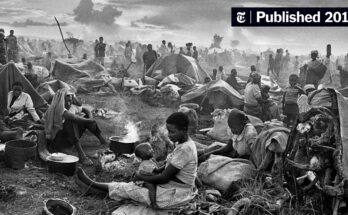Introduction
World War II, a conflict that reshaped the globe, involved most of the world’s nations and was marked by significant events that changed the course of history. From the rise of totalitarian regimes to the dramatic battles and the eventual fall of the Axis powers, the war’s complexity and scale are astounding. Let’s embark on a journey through this monumental period, exploring its causes, major events, and lasting impacts.
The Prelude to War

The Aftermath of World War I
The seeds of World War II were sown in the aftermath of World War I. The Treaty of Versailles, which ended the Great War, imposed harsh penalties on Germany. The economic and political instability in Germany created fertile ground for the rise of Adolf Hitler and the Nazi Party.
The Rise of Totalitarian Regimes
During the interwar period, several countries saw the rise of totalitarian regimes. In Germany, Adolf Hitler established a fascist state, while in Italy, Benito Mussolini did the same. In Japan, militarists took control, and in the Soviet Union, Joseph Stalin’s communist regime solidified power. These regimes pursued aggressive expansionist policies, setting the stage for global conflict.
The Outbreak of War
Invasion of Poland
The invasion of Poland by Germany on September 1, 1939, marked the beginning of World War II. The swift and brutal attack, employing a strategy known as blitzkrieg or “lightning war,” overwhelmed Polish defenses. Britain and France, honoring their alliances with Poland, declared war on Germany shortly after.
The Phony War
Following the invasion of Poland, a period of relative inactivity known as the Phony War ensued. Despite the declarations of war, there were no significant military operations on the Western Front for several months. This lull ended with Germany’s invasion of Denmark and Norway in April 1940.
The Axis Powers’ Advances
Fall of France
In May 1940, Germany launched an offensive against France and the Low Countries. The German forces bypassed the heavily fortified Maginot Line by advancing through the Ardennes Forest, a move that caught the Allies by surprise. France fell in June 1940, leading to the establishment of the Vichy government.
Battle of Britain
With France defeated, Germany turned its attention to Britain. The Battle of Britain, fought between the Royal Air Force (RAF) and the German Luftwaffe, was the first major campaign fought entirely by air forces. Despite sustained bombing campaigns, Britain withstood the assault, marking Hitler’s first major defeat.
Invasion of the Soviet Union
In June 1941, Germany launched Operation Barbarossa, the invasion of the Soviet Union. This massive campaign stretched from the Baltic Sea to the Black Sea, involving millions of troops. Initially successful, the invasion ultimately stalled due to fierce Soviet resistance and the harsh Russian winter.
The United States Enters the War
Attack on Pearl Harbor
The United States was drawn into the war following the Japanese attack on Pearl Harbor on December 7, 1941. This surprise attack on the US naval base in Hawaii led to significant American losses and prompted the US to declare war on Japan. Subsequently, Germany and Italy declared war on the United States.
Mobilization for War
The entry of the United States into World War II marked a turning point. The US mobilized its vast industrial and military resources, providing critical support to the Allies. American troops and supplies played a significant role in the subsequent campaigns in both the European and Pacific theaters.
Turning the Tide
Battle of Stalingrad
One of the most significant turning points of the war was the Battle of Stalingrad, which lasted from August 1942 to February 1943. The Soviet victory marked the beginning of a relentless push westward by the Red Army, which would eventually reach Berlin.
D-Day and the Liberation of Europe
On June 6, 1944, Allied forces launched Operation Overlord, the invasion of Normandy, commonly known as D-Day. This massive amphibious assault marked the beginning of the end for Nazi Germany. Over the following months, Allied forces liberated occupied Europe, advancing towards Germany from the west while the Soviets pushed from the east.
The Pacific Theater
In the Pacific, the United States adopted an “island-hopping” strategy to move closer to Japan. Key battles included Midway, Guadalcanal, and Iwo Jima. The relentless American advance, combined with strategic bombing campaigns, significantly weakened Japanese forces.
The End of the War
Fall of Berlin
In April 1945, Soviet forces captured Berlin after a brutal and destructive battle. Hitler passed away on April 30, and Germany surrendered unconditionally on May 7, 1945. This marked the end of World War II in Europe, celebrated as V-E Day (Victory in Europe Day).
Hiroshima and Nagasaki
In the Pacific, Japan continued to resist despite facing defeat. To hasten the end of the war, the United States dropped atomic bombs on the cities of Hiroshima and Nagasaki on August 6 and 9, 1945, respectively. The unprecedented destruction and loss of life led Japan to surrender on August 15, 1945, known as V-J Day (Victory over Japan Day).
The Aftermath and Impact
The Human Cost
World War II was the deadliest conflict in human history, with an estimated 70-85 million fatalities, including civilians and military personnel. The war caused widespread devastation, displacing millions and leaving countless cities in ruins.
The United Nations and Global Cooperation
In the wake of the war, the United Nations (UN) was established in 1945 to promote international cooperation and prevent future conflicts. The UN aimed to address the failures of the League of Nations and provide a platform for dialogue and conflict resolution.
The Cold War
The geopolitical landscape shifted dramatically after World War II, leading to the Cold War between the United States and the Soviet Union. This period of tension and competition lasted for decades, influencing global politics and leading to numerous proxy wars and conflicts.
Decolonization
The war also accelerated the process of decolonization. Many nations in Africa, Asia, and the Middle East gained independence from European colonial powers in the years following the war, reshaping the global political map.
Conclusion
World War II was a cataclysmic event that reshaped the world in profound ways. Its causes, major events, and aftermath continue to be studied and remembered for their far-reaching impacts. By understanding this history, we can appreciate the sacrifices made and the lessons learned, ensuring that such a global conflict never happens again.
FAQs
The main causes of World War II include the harsh conditions imposed by the Treaty of Versailles, the rise of totalitarian regimes, economic instability, and aggressive expansionist policies by Germany, Italy, and Japan.
The United States contributed significantly by providing military and economic support to the Allies, mobilizing vast resources, and participating in key battles in both the European and Pacific theaters.
The Battle of Stalingrad was a turning point in the war, marking the beginning of the Soviet Union’s push westward. The Soviet victory at Stalingrad halted the German advance and shifted the momentum in favor of the Allies.
The atomic bombs were dropped on Hiroshima and Nagasaki to force Japan to surrender and bring a swift end to the war. The unprecedented destruction caused by the bombs led Japan to surrender shortly after.
World War II led to the Cold War by creating a power vacuum in Europe and Asia. The ideological differences between the United States and the Soviet Union, along with competition for global influence, resulted in a prolonged period of geopolitical tension and rivalry.


